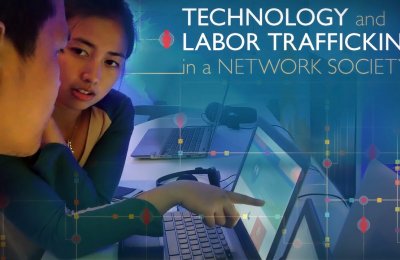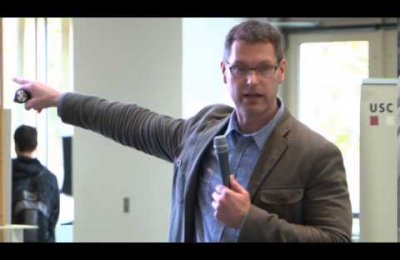By Andrea Richards
To read sociologists Howard S. Becker and Robert R. Faulkner’s Thinking Together: An E-mail Exchange and All That Jazz, one of the latest offerings from Annenberg Press, is also to listen to it. Published as an e-book, the epistolary includes YouTube links scattered throughout its text, which play the compositions the authors reference so that readers can hear firsthand the songs up for discussion—or even, in a few instances, see the authors (a pianist and a trumpet player, respectively) performing them. Of course, the inclusion of these elements changes the process of reading, making it a more technologically dynamic experience as one shifts from the e-reader to the Internet and back. The feel of such transitions can sometimes be one of disruption--of waiting and wanting, of the occasional quick fix of immediate gratification—but they didn’t interrupt the flow so much as create a new sort of textual technical experience, where the movement between apps becomes part of the reading. Such ad-libbing, moving in spats and spurts along a musical line can’t be wrong for a book about jazz—especially when the subject of the email correspondence itself is a project about jazz improvisation and the repertoire of jazz players.
For Thinking Together, the e-book platform is ideal; its form and subject meld so that rather than simply being an electronic version of a printed book, it delivers a multimedia experience that takes full advantage of its digital format. And that, of course, is the idea. “E-books give us the ability to include enhanced content—links to songs, videos, interviews—inclusion of audio/visual materials and click-throughs that you just can’t do in print,” says Arlene Luck, managing editor of Annenberg Press. Last May, the Press began its e-book initiative with Piracy Cultures (guest-edited by Manuel Castells and Gustavo Cardoso) culled from the Press’s renowned online academic journal, the International Journal of Communication (IJoC). “It started from an idea that our Vice Dean, Larry Gross, had for a book,” Luck explains. “He wanted to expand Annenberg Press’ efforts to demonstrate the potential for innovative scholarly publication by converting a collection of essays that had been published as a special section in the journal and package it differently—it was a collection that was well-suited as an e-book.”
Happy with the result, the Press decided to give two other special sections of the IJoC a similar treatment and expanded their offerings into the e-books, Breaking Boundaries in Political Entertainment Studies and The Politics of Academic Labor in Communication Studies. Next came publications that would originate as e-books—Thinking Together and The Complete Sol Worth, a compendium of the visual communications pioneer’s work that includes clips from his films. In less than a year, Annenberg Press, which functions mostly through the work of Ph.D. students (characterized by Luck as “brilliant”), who managed to publish five e-books—all available on Amazon and major e-book retailers and downloadable on a wide variety of devices.
In publishing, the case for e-books is strong: they are cheaper to produce and purchase, the content isn’t static, and distribution is worldwide and immediate. In 2012, the sales of e-books surpassed that of hardbacks and accounted for 20 percent of publishers’ revenue. Still, few publishers—commercial or academic—have ventured to experiment much with enhanced content in the realm of nonfiction.
Perhaps because of its unique position—a school with its own publishing house, rather than a more conventional university press or commercial imprint—Annenberg Press is in a good place to experiment with the form. “Because we are such a big school, we have a broad appeal,” says Luck. That wide berth of interdisciplinary content, in collusion with a medium that allows for multimedia presentation, creates e-books that can appeal to audiences outside of the academic community as well as scholars. “The reach is different. Now our books have greater accessibility by people other than those in field of communication study,” Luck explains with notable glee.
That growth in audience will likely continue with the publication of the forthcoming e-book, Warning! Graphic Content, a collection of political cartoons and other “graphic content” created by Dwayne Booth, aka “Mr. Fish.” Renowned for his piquant and often nihilistic single-panel cartoons (his work appears regularly in Harper’s and on Truthdig.com), Booth’s e-book project will contain links to other images, to audio interviews, and to possible film clips. “It’s going to be loaded,” Luck says, and “some parts will function similarly to a website.”
Echoes of Gabriel Tarde: What We Know Better or Different 100 Years Later is another book project based on 19th-century French sociologist Gabriel Tarde’s essay of 1898, “L’Opinion et la Conversation” analyzing the applicability of Tarde’s theories to contemporary studies of communication, some 100 years later. Elihu Katz, along with Christopher Ali and Joohan Kim, review current academic thought regarding the interaction of media, conversation, opinion, and action in public space and deliberative democracy. Comparisons between the “then” and “now” are made through hyperlinking.
Katz and Thinking Together’s Becker are their late 80’s, and the Press takes great pride in being able help extend their work to new mediums and new audiences. According to Luck, the biggest challenge the Press faces in migrating to e-books is keeping up with constant shifts in platforms and technologies. In contending with various e-book formats and a growing plethora of readers, the old print model of publishing a book and being done with it (until it merits a new edition, at least) is over. Instead, content must be revisited quarterly to make sure it remains available across different platforms and devices. As for another seemingly great challenge—it’s getting writers to create more compact book titles. “Scholarly titles for manuscripts can run up to twenty words and we’ve been trimming those down,” she says. Books require less verbose titles and subtitles. “We ask authors to give us two to three main words, and we work from there,” she admits. “We do a lot of back and forth.”








